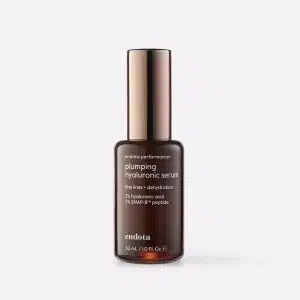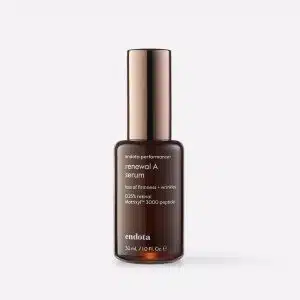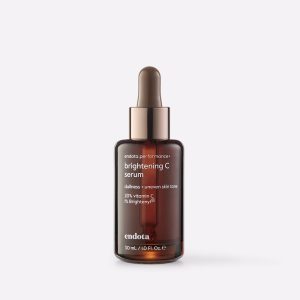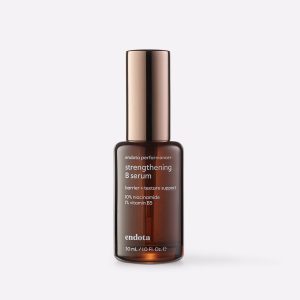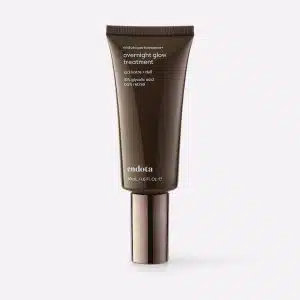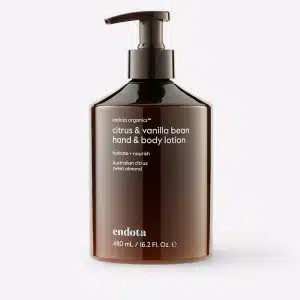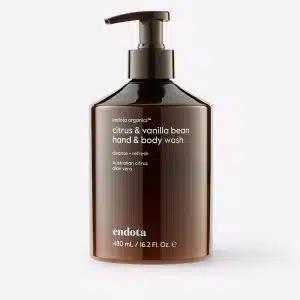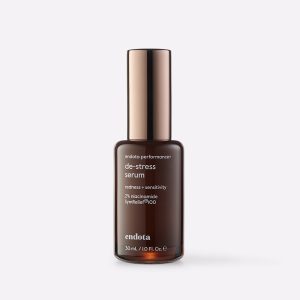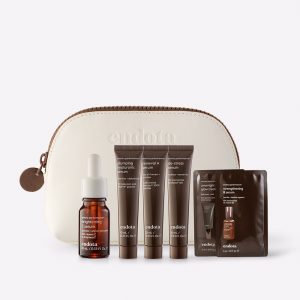Serums have been enlisted into modern skincare rituals everywhere, chosen for their ability to deliver potent ingredients straight into the skin¹. Yet, many are still unsure about what serums are, how they differ from moisturisers, and the correct way to incorporate them into daily rituals. Before we dive deeper into serums, here’s a quick roadmap to help you make intentional choices for your skin’s wellbeing:
What a serum is: A serum is a lightweight, fast-absorbing treatment packed with active ingredients. They have a thinner consistency than creams or oils, allowing for deeper penetration and more immediate results.²
What a serum does for your face: Serum targets various skin concerns like dryness, dullness, ageing, hyperpigmentation, acne, and more.
The difference between serum and moisturiser: Serums penetrate deeper than moisturisers for more targeted results.
When to use a serum: Apply after cleansing and before moisturising, morning or night, depending on the formula.
Let’s demystify serums further, to understand their purpose, all their benefits, and the best ways to apply them to help you achieve your best complexion.
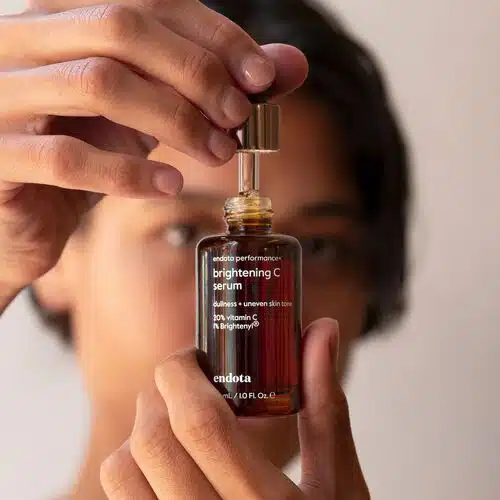
go deeper with serums
Arguably some of the hardest-working skincare products in your bathroom, serums are lightweight, fast-absorbing skincare products formulated with a high concentration of active ingredients.
common types of serums:
- Hydrating serums contain ingredients like hyaluronic acid to boost moisture levels.
- Brightening serums often include vitamin C to even out skin tone and improve radiance.
- Anti-ageing serums feature retinal or peptides to reduce the appearance of fine lines and increase elasticity.
- Clarifying serums use acids like salicylic acid to combat acne and unclog pores.
what does serum do for your face?
Serums offer targeted treatments that address specific skin concerns with precision.
benefits of using serums:
- Hydration: Hyaluronic acid serums draw moisture into the skin, keeping it feeling plump and supple.
- Brightening: Vitamin C serums help reduce dullness and fade dark spots, resulting in a luminous complexion.
- Firming and smoothing: Peptides and collagen-boosting ingredients enhance skin elasticity and texture.
- Targeted treatment: Ingredients like niacinamide and salicylic acid address issues like acne, redness, and enlarged pores.
Selecting a serum that aligns with your skin type and concerns is crucial for optimal results.
serum vs. moisturiser: what's the difference?
While both serums and moisturisers are essential, they serve different functions in skincare. In essence, serums treat, while moisturisers hydrate and protect.
Clinical studies support that serums, with their lightweight and concentrated formulations, are designed to penetrate quickly and deliver active ingredients effectively³. For example, a 12-week study on a multi-ingredient facial serum that included hyaluronic acid demonstrated significant improvements in fine lines, wrinkles, skin tone, and elasticity as early as 4 weeks, confirming the serum’s ability to boost skin health beyond that of moisturisers alone.
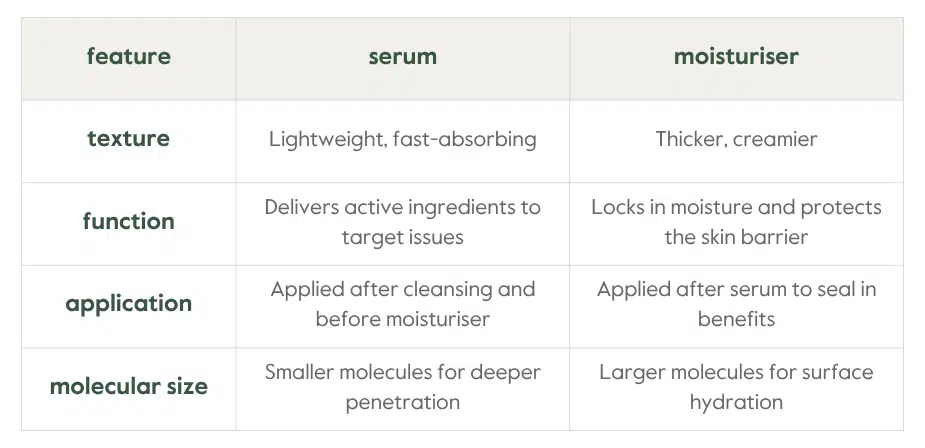
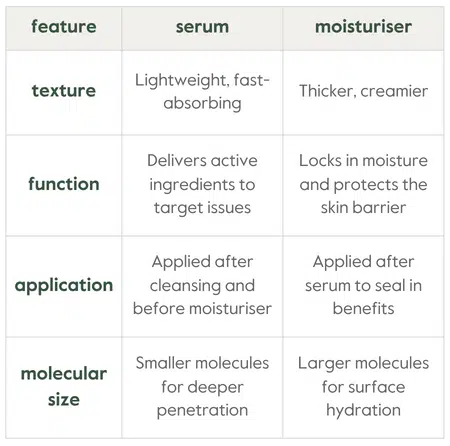
do I use moisturiser or serum first?
Always apply serum before moisturiser. This sequence makes sure the active ingredients in the serum penetrate effectively, while the moisturiser seals in hydration and boosts the serum’s efficacy.
suggested skincare routine order:
- Cleanser
- Toner
- Serum
- Moisturiser
- Sunscreen (morning routine)
For instance, our range of performance+ serums are applied after cleansing and toning and before moisturising to maximise its benefits.
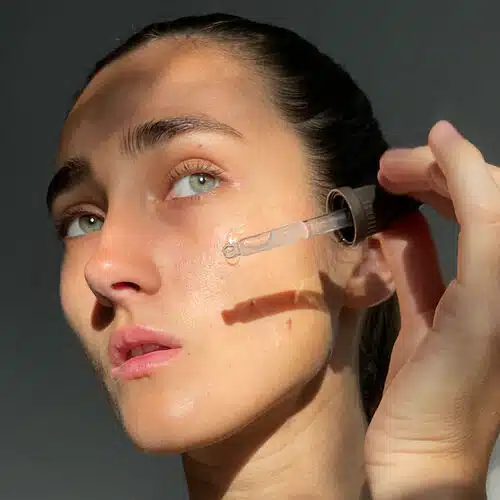
how to choose the right serum for your skin
Selecting the appropriate serum involves understanding your skin type and concerns.
skin types and the ingredients to look for:
- Dry skin: Hyaluronic acid delivers intense hydration and helps plump the skin.
- Oily/acne-prone skin: Niacinamide and salicylic acid work to help regulate oil and clear congested pores.
- Sensitive skin: Look for calming ingredients like niacinamide, panthenol (vitamin B5), and SymRelief®100 to reduce redness and support the skin barrier.
- Ageing skin: Retinal and peptides such as Matrixyl™ 3000 help to reduce the appearance of fine lines and improve firmness.
- Dull skin: Vitamin C and glycolic acid help to brighten and even skin tone for a more radiant complexion.
When introducing a new serum, perform a patch test to check your compatibility. Start with a small amount on your inner forearm and wait 24 hours to check for any adverse reactions.

how to choose the right serum for your skin
Selecting the appropriate serum involves understanding your skin type and concerns.
skin types and the ingredients to look for:
- Dry skin: Hyaluronic acid delivers intense hydration and helps plump the skin.
- Oily/acne-prone skin: Niacinamide and salicylic acid work to help regulate oil and clear congested pores.
- Sensitive skin: Look for calming ingredients like niacinamide, panthenol (vitamin B5), and SymRelief®100 to reduce redness and support the skin barrier.
- Ageing skin: Retinal and peptides such as Matrixyl™ 3000 help to reduce the appearance of fine lines and improve firmness.
- Dull skin: Vitamin C and glycolic acid help to brighten and even skin tone for a more radiant complexion.
When introducing a new serum, perform a patch test to check your compatibility. Start with a small amount on your inner forearm and wait 24 hours to check for any adverse reactions.
how to apply serum properly
Applying serum correctly improves its effectiveness.
step-by-step guide:
- Cleanse: Remove impurities with a gentle cleanser.
- Tone: Balance your skin’s pH with a toner.
- Apply serum: Dispense a few drops onto your fingertips and gently press into your face and neck.
- Wait: Allow the serum to absorb for a minute before layering with another serum or your moisturiser.
- Moisturise: Follow with a moisturiser to lock in the serum’s benefits.
tips:
- Apply to slightly damp skin to increase absorption.
- Use upward, gentle strokes to promote circulation.
- Avoid rubbing; instead, press the serum into the skin.
when and how often should I use a serum?
The frequency of serum application depends on its ingredients and your skin’s needs. Some serums are suitable for daily use, while others, like our Renewal A Serum, are recommended for use twice a week initially due to their potency, before increasing skin tolerance to every other night. Ensure to follow the product’s instructions and monitor your skin’s response.
general guidelines:
- Morning: Use antioxidant serums like vitamin C to protect against environmental stressors.
- Evening: Apply serums with retinal or exfoliating acids to support skin renewal during sleep.
grounded by science, loved by skin
Recent clinical research confirms what many have already felt: hyaluronic acid serum truly delivers. Our Plumping Hyaluronic Serum has been clinically tested to increase skin hydration by 44%, forming a protective barrier on the skin after 12 weeks of twice-daily use. Clinical test results also show that skin texture is improved by 16% and the appearance of wrinkles by 17% after twice-daily use in a 12-week time period.
Serums really do sink in fast to deliver a potent dose of active ingredients, creating real, skin-deep results you can see and feel.

the favourite serums from endota
We offer a range of serums to help treat various skin concerns:
- Brightening C Serum: Ideal for dull or pigmented skin, it gives skin a glow and evens out tone with 20% vitamin C, Brightenyl® and hyaluronic acid.
- Plumping Hyaluronic Serum: Perfect for dry or mature skin, it deeply hydrates and smoothes with 2% hyaluronic acid, SNAP-8™ peptide and ceramides to firm and strengthen the skin barrier.
- Renewal A Serum: Targets signs of ageing overnight with 0.25% retinal and Matrixyl™ 3000 to smooth fine lines, brighten tone, and visibly firm and plump the skin.
- Clearing BHA Serum: Ideal for oily or breakout-prone skin, this clarifying serum combines 2% salicylic acid and 5% niacinamide to refine pores, balance oil, and smooth skin tone and texture.
- Strengthening B Serum: A multitasking must-have for all skin types, this serum blends 10% niacinamide and 1% panthenol to brighten dullness, balance oil, reduce fine lines, and strengthen the skin barrier for a smoother, healthier-looking complexion.
- De-Stress Serum: Calm, soothe and strengthen sensitive or stressed skin with this comforting serum, featuring 2% niacinamide, SymRelief®100 and 1% hyaluronic acid to reduce redness, dryness and fine lines while restoring a soft, supple complexion.

the favourite serums from endota
We offer a range of serums to help treat various skin concerns:
- Brightening C Serum: Ideal for dull or pigmented skin, it gives skin a glow and evens out tone with 20% vitamin C, Brightenyl® and hyaluronic acid.
- Plumping Hyaluronic Serum: Perfect for dry or mature skin, it deeply hydrates and smoothes with 2% hyaluronic acid, SNAP-8™ peptide and ceramides to firm and strengthen the skin barrier.
- Renewal A Serum: Targets signs of ageing overnight with 0.25% retinal and Matrixyl™ 3000 to smooth fine lines, brighten tone, and visibly firm and plump the skin.
- Clearing BHA Serum: Ideal for oily or breakout-prone skin, this clarifying serum combines 2% salicylic acid and 5% niacinamide to refine pores, balance oil, and smooth skin tone and texture.
- Strengthening B Serum: A multitasking must-have for all skin types, this serum blends 10% niacinamide and 1% panthenol to brighten dullness, balance oil, reduce fine lines, and strengthen the skin barrier for a smoother, healthier-looking complexion.
- De-Stress Serum: Calm, soothe and strengthen sensitive or stressed skin with this comforting serum, featuring 2% niacinamide, SymRelief®100 and 1% hyaluronic acid to reduce redness, dryness and fine lines while restoring a soft, supple complexion.
FAQs to support your serum rituals
can I use a serum without moisturiser?
While serums provide targeted treatment, moisturisers are essential to seal in hydration and protect the skin barrier.
at what age should I start using a serum?
Serums can be introduced in your early 20s to address specific concerns or as a preventative measure against ageing.
can I layer multiple serums?
Yes, but it’s important to layer from the thinnest to the thickest consistency and ensure the ingredients are compatible.
is serum suitable for sensitive skin?
Absolutely. Choose serums formulated for sensitive skin, free from fragrances and harsh chemicals.
what's the difference between a face oil and serum?
Serums are water-based and deliver active ingredients deep into the skin, while face oils are lipid-based, providing nourishment and sealing in moisture.
discover your best complexion
With a little understanding and the right products, achieving radiant, healthy skin that reflects your inner wellbeing is truly within reach. Shop serums for targeted results today.
discover performance+
references
¹McCall-Perez, F., Stephens, T. J., & Herndon, J. H., Jr. (2011). Efficacy and tolerability of a facial serum for fine lines, wrinkles, and photodamaged skin. Clinical, Cosmetic and Investigational Dermatology, 4, 129–137. Retrieved from https://www.ncbi.nlm.nih.gov/pmc/articles/PMC3140905/
²Waldman, A., M.D. (2018, June 12). Skin serum: What it can and can’t do. Harvard Health Publishing. Retrieved from https://www.health.harvard.edu/blog/skin-serum-what-it-can-and-cant-do-2018061214029
³McCall-Perez, F., Stephens, T. J., & Herndon, J. H., Jr. (2011). Efficacy and tolerability of a facial serum for fine lines, wrinkles, and photodamaged skin. Clinical, Cosmetic and Investigational Dermatology, 4, 129–137. Retrieved from https://www.ncbi.nlm.nih.gov/pmc/articles/PMC3140905/
